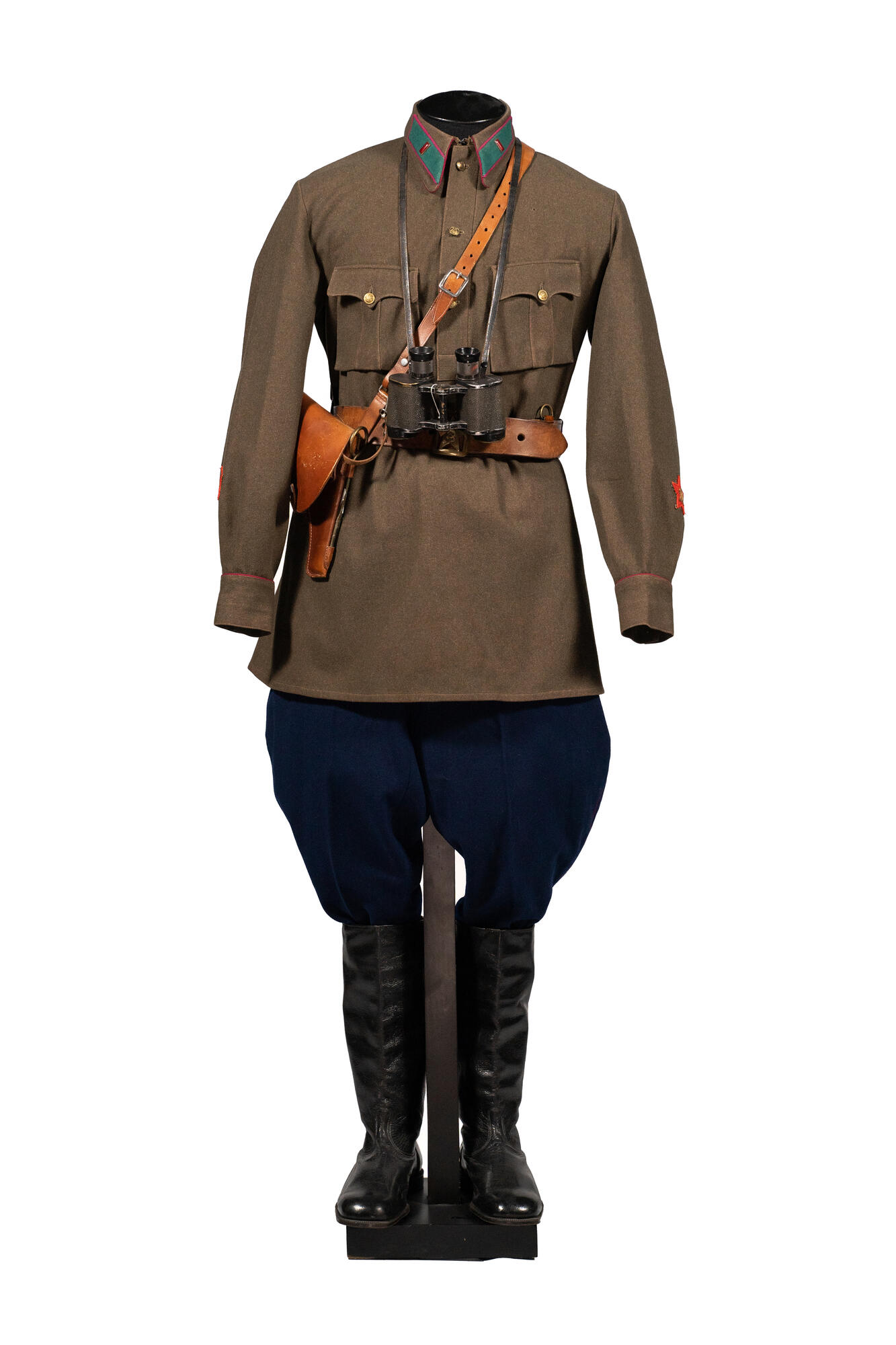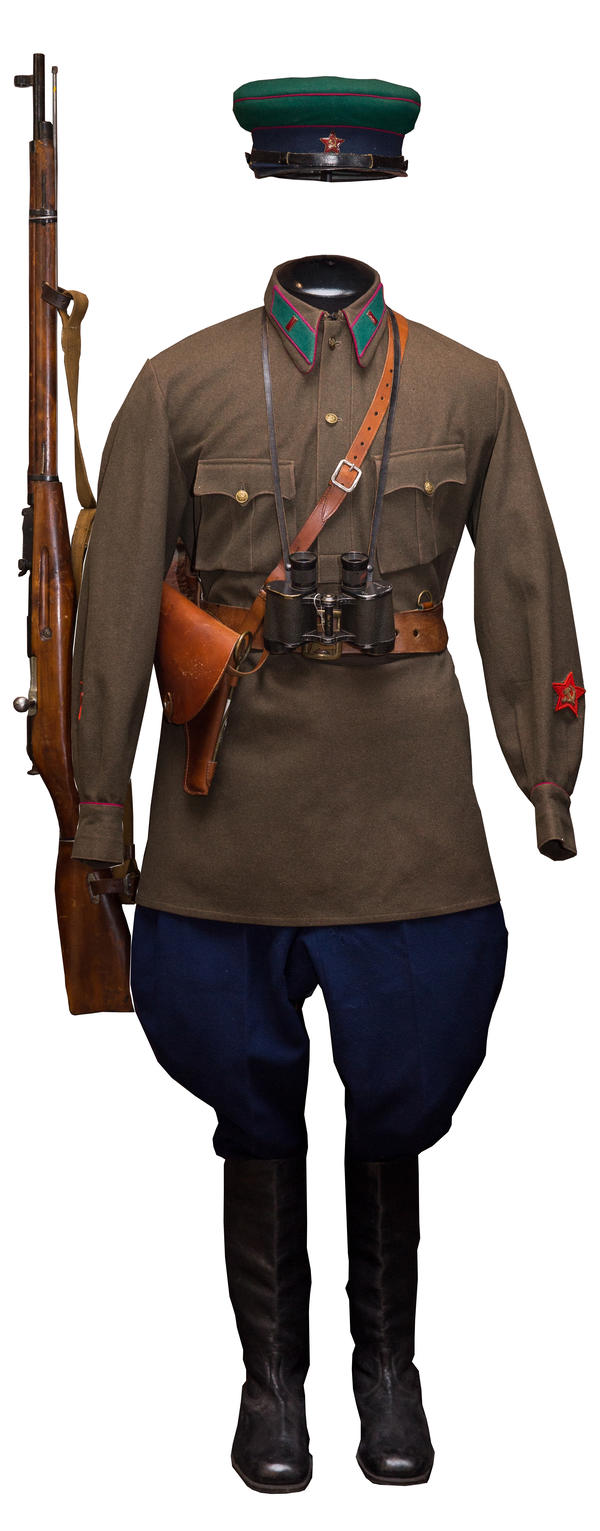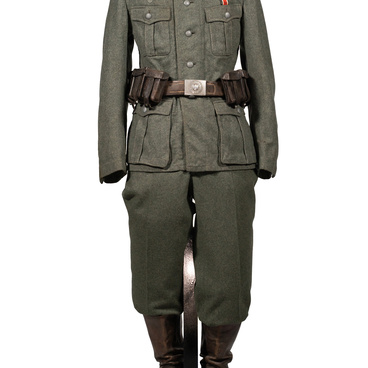The Victory Museum houses the military uniform of the NKVD border security forces. The NKVD was a Soviet central operating agency that was aimed at fighting crime and maintaining public order.
The history of the People’s Commissariat for Internal Affairs began in 1917, long before the Great Patriotic War. The agency changed its name several times, expanded, and established separate agencies for the new Soviet republics. However, in spite of all the changes, the organization’s main objectives were fighting crime and protecting national security.
The NKVD uniform was adopted in 1924. Its servicemen wore a khaki-colored shirt, blue trousers, a colored cap, a cavalry jacket, and black boots. The light-green collar patches had a crimson contour and a red line. Commanders wore woolen smocks with pockets and dark-blue trousers. The insignia was determined by the color of lines in the patches, the stars, and the metal circles.
Another important element of the uniform was the light-green woolen cap. Its band featured a five-pointed red star made of metal which gave the cap its recognizable design. The cap was also equipped with a lacquered chin strap and a double-edged peak.
The organization’s members carried firearms on brown belts. They had a holster on the right side. This uniform was used both before the war and during battles. Even after the name of the agency was changed, the uniform remained the same. Interestingly, former members of the NKVD were allowed to continue wearing the uniform with the patches and the insignia removed. Although the uniform was standard, the assortment of clothing items and fabrics varied depending on the place of duty.
At the beginning of the Great Patriotic War, the guards of the Western board of the Soviet Union faced the first attacks. They participated in continuous rear-guard action. Later, the border guards formed the basis of the NKVD forces that ensured rear area defense. Partisan units were organized. Their future instructors studied military science with the help of the NKVD forces. Border guards, members of internal troops, and ninety-five commanders contributed to organizing training.
For their heroism and valor shown in the first battles against the enemy’s superior forces, 826 border guards were awarded orders and medals of the USSR. Eleven guards were awarded the title of the Hero of the Soviet Union, five of them — posthumously.
The history of the People’s Commissariat for Internal Affairs began in 1917, long before the Great Patriotic War. The agency changed its name several times, expanded, and established separate agencies for the new Soviet republics. However, in spite of all the changes, the organization’s main objectives were fighting crime and protecting national security.
The NKVD uniform was adopted in 1924. Its servicemen wore a khaki-colored shirt, blue trousers, a colored cap, a cavalry jacket, and black boots. The light-green collar patches had a crimson contour and a red line. Commanders wore woolen smocks with pockets and dark-blue trousers. The insignia was determined by the color of lines in the patches, the stars, and the metal circles.
Another important element of the uniform was the light-green woolen cap. Its band featured a five-pointed red star made of metal which gave the cap its recognizable design. The cap was also equipped with a lacquered chin strap and a double-edged peak.
The organization’s members carried firearms on brown belts. They had a holster on the right side. This uniform was used both before the war and during battles. Even after the name of the agency was changed, the uniform remained the same. Interestingly, former members of the NKVD were allowed to continue wearing the uniform with the patches and the insignia removed. Although the uniform was standard, the assortment of clothing items and fabrics varied depending on the place of duty.
At the beginning of the Great Patriotic War, the guards of the Western board of the Soviet Union faced the first attacks. They participated in continuous rear-guard action. Later, the border guards formed the basis of the NKVD forces that ensured rear area defense. Partisan units were organized. Their future instructors studied military science with the help of the NKVD forces. Border guards, members of internal troops, and ninety-five commanders contributed to organizing training.
For their heroism and valor shown in the first battles against the enemy’s superior forces, 826 border guards were awarded orders and medals of the USSR. Eleven guards were awarded the title of the Hero of the Soviet Union, five of them — posthumously.



